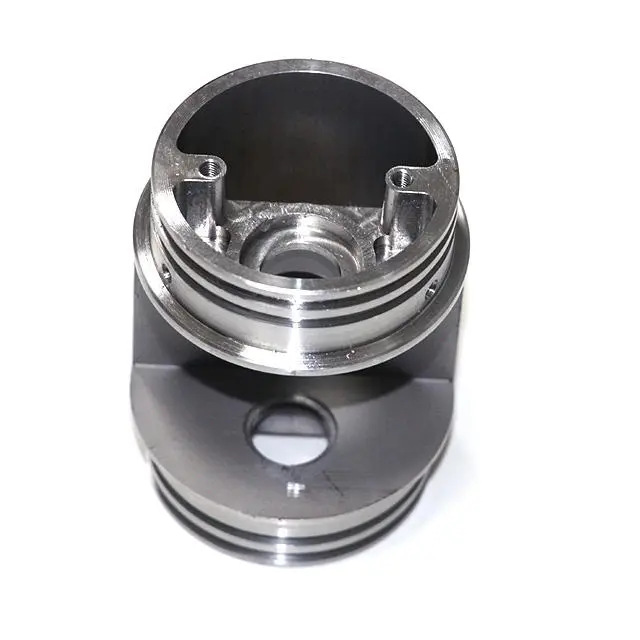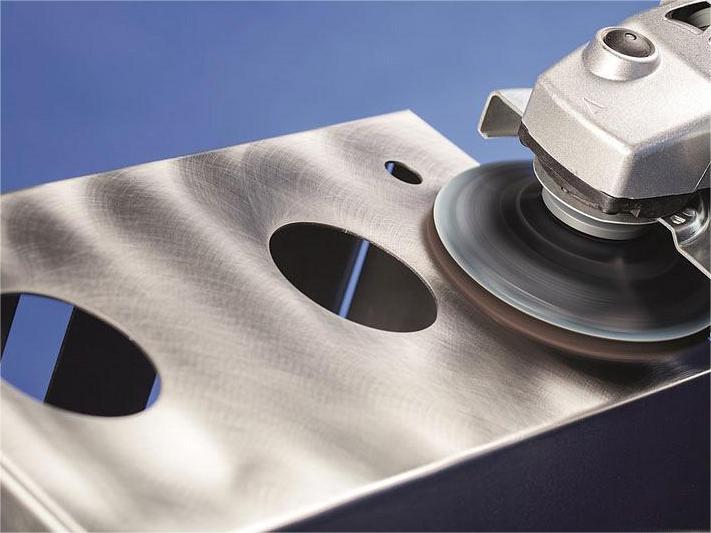
- +8615586668226
- [email protected]
- رقم 30، حديقة هونغبانغ الصناعية، شينزين

The metal finishing industry, encompassing processes like التصنيع الآلي باستخدام الحاسب الآلي, التفريز باستخدام الحاسب الآلي الرقمي, and electroplating, plays a vital role in various sectors, from automotive to electronics. However, its operations can significantly impact the environment. As a leading CNC manufacturing service and product manufacturing factory, we understand the importance of addressing these challenges head-on.
Traditional metal finishing processes often involve the use of hazardous chemicals, generating wastewater with heavy metals and other pollutants. “The waste generated is considered to be hazardous or toxic and ranges from volatile organics, acid/alkali fumes, hexavalent chrome, nickel, wastewater containing metal/cyanide, sludge with high metal contents, oil/grease, paint residue etc.,” according to the study. These substances pose risks to human health and ecosystems if not managed properly. Our commitment to sustainable practices drives us to explore and implement cleaner production methods.
Cleaner production (CP) is not just an environmental buzzword; it’s a strategic approach that benefits both the planet and the bottom line. As the PDF highlights, “The application of CP principles to metal finishing processes can reduce or eliminate these factors.” By minimizing waste generation, reducing resource consumption, and optimizing processes, companies can achieve significant cost savings, improve product quality, and enhance their brand reputation.
Moreover, regulatory pressures and consumer demand for eco-friendly products are increasing. Embracing cleaner production allows businesses to stay ahead of the curve and demonstrate their commitment to sustainability. Our factory has witnessed firsthand the positive impact of CP, and we are eager to share our knowledge and experience with you.
Benchmarking is a powerful tool for identifying areas for improvement and tracking progress. The study introduces the Benchmarking Cleaner Production Tool (BCPT), which assesses a metal plating plant’s performance across eight key parameters. “The model is based on the unit operation/mass balance principle,” providing a comprehensive evaluation of the facility’s environmental footprint.
By comparing their performance against Best Available Technology (BAT), companies can pinpoint inefficiencies and set realistic targets for improvement. Our factory uses advanced techniques, including 5 محاور التصنيع الآلي باستخدام الحاسب الآلي بنظام التحكم الرقمي, to improve efficiency. This data-driven approach enables us to continuously optimize our processes and minimize our environmental impact. Regular benchmarking helps us stay at the forefront of sustainable manufacturing. “By repeating the benchmarking exercise, the company can measure the improvement of its CP,” the study emphasizes.
The BCPT highlights several critical areas for improvement:
“The largest potential improvements were in water savings and process bath maintenance,” the study reveals. Addressing these areas can lead to substantial environmental and economic benefits. Our factory has implemented targeted strategies in each of these areas, resulting in significant improvements in our overall performance.
Good housekeeping is the foundation of cleaner production. Simple yet effective measures can significantly reduce waste generation and improve operational efficiency. As the study notes, “Good housekeeping implies the practice of minimizing raw material losses and thus preventing unnecessary waste generation.”
Here’s how our factory has optimized housekeeping:
| Practice | المزايا |
|---|---|
| Waste segregation | Reduces treatment chemical requirements |
| Optimized dripping | Minimizes drag-out losses |
| Staff training | Ensures awareness on all operations and the need for operating efficiently |
These practices have not only reduced our environmental footprint but also improved our bottom line by minimizing material waste and optimizing resource utilization.
Process optimization involves fine-tuning operations to maximize efficiency and minimize waste. “Process optimization implies changes to the process to ensure the efficient operations of the various units,” the study explains.
Our factory has implemented several process optimization strategies:
For example, we also provide services such as التصنيع الآلي الدقيقو تصنيع الصفائح المعدنية. These optimizations have led to significant reductions in water and chemical consumption, demonstrating the tangible benefits of a proactive approach to process improvement.
Resource optimization is about using raw materials, water, and energy as efficiently as possible. The study highlights the importance of minimizing chemical and water usage: “The raw materials such as water and chemicals must only be used as required in the process.”
Our factory has adopted several resource optimization strategies:
These measures have not only reduced our environmental impact but also generated substantial cost savings. As a result, our النماذج الأولية السريعة has also been greatly improved. We believe that resource optimization is a win-win for both the environment and the business.
Cleaner production and product quality go hand in hand. By optimizing processes and minimizing waste, companies can enhance the quality and consistency of their products. “Optimum operations ensure improved product quality,” the study states.
Our factory has found that implementing cleaner production practices has led to:
These improvements have not only enhanced customer satisfaction but also reduced rework and waste, further demonstrating the interconnectedness of cleaner production and product quality.
The study provides compelling evidence of the tangible benefits of implementing cleaner production. One case study of a job shop in Kwa-Zulu Natal revealed impressive results:
These savings translated to a total of R200,000 per year. Another case study of an electrical appliance manufacturer demonstrated even greater water savings of 80% and chemical savings of 45%.
Table: Savings Achieved in the Electroplating Industries (Partial)
| Company Name | Process Description | Total CP Investment | Payback Period (months) | Chemical Savings per year (%) | Water Savings per year (%) |
|---|---|---|---|---|---|
| Aberdare Cables | Tin Plating Copper | 617,880 | 11 | 41 | 99 |
| Anodising | Aluminum Anodising | 134,600 | 23 | 37 | 79 |
These case studies demonstrate that cleaner production is not just an environmental initiative; it’s a smart business strategy that can lead to significant cost savings and improved competitiveness. Our factory has experienced similar benefits, and we are committed to sharing our success stories to inspire others.
The study highlights significant progress in the South African metal finishing industry since the implementation of the Cleaner Metal Finishing Industry Production Project:
“The heavy metal load to the Central Effluent Treatment Plants (CETPs) in Durban Metro has been reduced significantly,” the study reports, with chrome reduction of 68% and cadmium reduction of 80%.
These achievements demonstrate the power of collaboration and the effectiveness of targeted interventions. Our factory is proud to be part of this positive change, and we are committed to continuing our efforts to promote cleaner production within the industry.
How can a small metal finishing shop implement cleaner production principles?
Start with simple housekeeping measures like waste segregation and optimizing drip times. Then, focus on process optimization, such as improving bath chemistry management and implementing efficient rinsing techniques. Even small changes can lead to significant improvements.
What are the biggest challenges in implementing cleaner production in the metal finishing industry?
The study highlights the lack of data availability and the complexity of assessment tools as major barriers. Additionally, overcoming resistance to change and securing management buy-in can be challenging.
How can companies measure the success of their cleaner production initiatives?
Regular benchmarking using tools like the BCPT allows companies to track their progress and identify areas for further improvement. Monitoring key parameters like water and chemical consumption, waste generation, and product quality provides valuable insights.
What role do regulations play in promoting cleaner production?
Regulations provide a strong incentive for companies to adopt cleaner production practices. By setting standards and enforcing compliance, regulators can drive industry-wide improvements.
Are there financial incentives available for companies implementing cleaner production?
In some regions, financial incentives like grants or tax breaks may be available. Companies should research local and national programs that support cleaner production initiatives.
How do I know what surface finish is right for my product?
Our team of experts can guide you in selecting the optimal surface finish based on your product’s application, performance requirements, and aesthetic considerations. We’ll help you navigate the options and choose the best solution for your needs.
By embracing cleaner production, the metal finishing industry can move towards a more sustainable and prosperous future. As a leading CNC manufacturing service and product manufacturing factory, we are committed to sharing our knowledge and expertise to help others on this journey. Contact us today to learn more about how we can help you optimize your processes, reduce your environmental impact, and achieve your business goals. We also have detailed information on each service on our website, such as تشطيب السطح و التجميع. Let’s work together to create a cleaner, more efficient, and more sustainable future for the metal finishing industry.
العنوان
رقم 30، متنزه هونغبانغ الصناعي، شينزين
البريد الإلكتروني
[email protected]
الهاتف
+86 15586668226
احصل على أحدث الاتجاهات والحقائق حول التصنيع باستخدام الحاسب الآلي من مدونتنا.
شركة Shenzhen Runkey Precision Technology Co. Ltd، وهي شركة تابعة لمجموعة Tensun Group، هي الحل الشامل الموثوق به للتصنيع المخصص بدءًا من النماذج الأولية وحتى الإنتاج، حيث إنها تحول فكرتك إلى واقع ملموس من خلال موارد التصنيع الرقمية، والعمليات المبسطة، وتوجيهات الخبراء، والجداول الزمنية المتسارعة، والجودة التي لا تقبل المساومة.
©2024. التصنيع باستخدام الحاسب الآلي جميع الحقوق محفوظة.